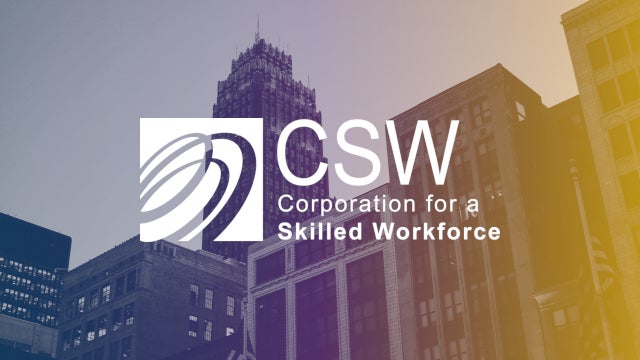With all of Washington focused on tax reform, you may have missed that this week is National Apprenticeship Week. Apprenticeships continue to receive increased attention from policymakers as they give workers access to hands-on training for middle-skill jobs and can result in higher lifetime earnings for those that complete them. Middle-skill jobs – those which require education beyond high school but not a four-year degree – make up the largest part of the labor market in all 50 states. For these reasons, it’s no surprise that both President Obama and President Trump have proposed expanding the number of apprenticeships.
As technology and automation continue to transform what the future of work looks like, skills development is increasingly important. While we’ve seen bipartisan support for the apprenticeship model, the opportunities for skill building in the U.S. remain relatively limited. Today, there are more than 500,000 apprentices across the U.S. in more than 1,000 occupations. The overwhelming majority are in the construction trades, followed by manufacturing. Yet relative to other countries such as Germany, and despite the benefit to companies and workers alike, only a very small share of American workers obtains work through apprenticeships. This is in part because apprenticeship programs can be costly to administer. According to a recent report from the Center on Education and the Workforce at Georgetown University, employers spend $47 billion on certification and apprenticeships.
To reduce the cost and expand access to apprenticeship programs, Sens. Maria Cantwell and Susan Collins introduced bipartisan legislation to establish a tax credit to incentivize companies to hire apprentices. And while not targeted specifically at apprenticeship programs, Sens. Mark Warner, Bob Casey and Debbie Stabenow recently introduced the Investing in American Workers Act, which incentivizes employers to increase investment in skills training for workers, including apprenticeship programs, by creating a tax credit modeled after the popular R&D tax credit.
But as of this writing, the Senate and House tax reform bills do not include any provisions that would specifically incentivize companies to hire apprentices or increase the amount they invest in their workforce whether through wage increases, benefit expansions, or additional skill development. Rather, the House and Senate tax bills include counter-productive provisions such as the elimination of student loan deductions, qualified tuition reduction, and tax benefits for employer-provided education. Tax reform should modernize our tax code to reflect the changing nature of our 21st century economy. This requires acknowledging the necessity of helping students and workers continually invest in education and skills throughout their careers.
Supporters of lowering corporate tax rates argue that the proposed tax reform bills will spur business investment in the United States, leading to new technologies, more factories and, ultimately, job creation and higher wages. But there are already reasons to doubt this conclusion. At this week’s Wall Street Journal’s CEO Council meeting, CEOs were asked if they expect to increase their levels of investment if the tax reform bill passes. Only a handful raised their hands. Another worrying sign came during the most recent round of earnings calls, when CEOs talked more about expanding automation than about investing in their workforce.
Technology will continue to change the skills critical for economic success. To make sure American workers have the skills necessary to perform the jobs of the future, policymakers need to use opportunities like tax reform as a lever to advance this goal. As the debate continues about how to reform our tax code, hopefully Congress will adjust its course and develop a plan that better reflects the ways that our economy is changing.

